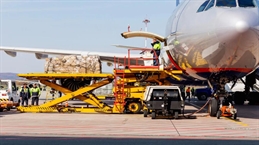
Airlines are projected to see higher profits this year despite global economic and political uncertainty, according to a new report from the International Air Transport Association (IATA).
It said that net profits at US$36.0 billion improved from the US$32.4 billion earned in 2024, but were slightly down on the previously projected US$36.6 billion (December 2024).
The net profit margin at 3.7% improved from the 3.4% earned in 2024 and the previously projected 3.6%. Total revenues are at a record high of US$979 billion, up 1.3% on 2024, but below the US$1 trillion previously projected.
Total air cargo volumes reached 69 million tonnes, increasing marginally by 0.6% in 2024, but IATA said this is below the previously projected 72.5 million tonnes.
"The first half of 2025 has brought significant uncertainties to global markets. Nonetheless, by many measures, including net profits, it will still be a better year for airlines than 2024, although slightly below our previous projections," said Willie Walsh, director general at IATA, adding that the biggest positive driver is the price of jet fuel, which has fallen 13% compared with 2024 and 1% below previous estimates.
"Moreover, we anticipate airlines flying more people and more cargo in 2025 than they did in 2024, even if previous demand projections have been dented by trade tensions and falls in consumer confidence," Walsh further said.
"The result is an improvement of net margins from 3.4% in 2024 to 3.7% in 2025. That's still about half the average profitability across all industries. But considering the headwinds, it's a strong result that demonstrates the resilience that airlines have worked hard to fortify," he added.
IATA said Gross Domestic Product (GDP) is the traditional driver of airline economics. However, although global GDP growth is expected to fall from 3.3% in 2024 to 2.5% in 2025, airline profitability is expected to improve.
"This is largely on the back of falling oil prices. Meanwhile, continued strong employment and moderating inflation projections are expected to keep demand growing, even if not as fast as previously projected," Walsh said, adding that efficiency is also another significant driver of the outlook.
Air cargo growth to plummet in 2025
Overall, total revenues are expected to grow by 1.3%, outpacing a 1.0% increase in total expenses, shoring up industry profitability, which IATA said is a "historic high."
In terms of cargo, IATA said revenues are expected to be US$142 billion in 2025, down 4.7% on 2024.
"This is primarily based on the expected impact of reduced GDP growth, largely influenced by trade-dampening protectionist measures, including tariffs," the report said, adding that as a result, air cargo growth is expected to slow to 0.7% in 2025 (from 11.3% in 2024).
The cargo yield is also expected to reduce by 5.2%, reflecting a combination of slower demand growth and lower oil prices.
"Although significant uncertainty remains on how trade tensions will evolve over the year, as of April, cargo demand was holding up well with a 5.8% year-on-year increase," IATA said.
It added that in terms of expenses, jet fuel is expected to average US$86/barrel in 2025 (well below the US$99 average in 2024), translating into a total fuel bill of US$236 billion, accounting for 25.8% of all operating costs — US$25 billion lower than the US$261 billion in 2024.
"Recent financial data show minimal fuel hedging activity over the past year, indicating that airlines will generally benefit from the reduced fuel cost. It is not expected that fuel will be impacted by trade tensions," IATA said.
SAF supply to double
SAF production is expected to grow to two million tonnes (Mt) in 2025, accounting for just 0.7% of airline fuel use.
SAF production will double from the 1 Mt produced in 2024 (all of which was purchased by airlines), but production needs an exponential expansion to meet the demands of the industry's commitment to net-zero carbon emissions by 2050.
IATA estimates that the average cost of SAF in 2024 was 3.1 times that of jet fuel, for a total additional cost of US$1.6 billion. In 2025, the global average cost for SAF is expected to be 4.2 times that of jet fuel — with the extra cost largely the result of SAF compliance fees being levied by European fuel suppliers to hedge their potential costs as a result of European SAF mandates to include 2% SAF in the jet fuel supply.
"The behaviour of fuel suppliers in fulfilling the SAF mandates is an outrage. The cost of achieving net-zero carbon emissions by 2050 is estimated to be an enormous US$4.7 trillion. Fuel suppliers must stop profiteering on the limited SAF supplies available and ramp up production to meet the legitimate needs of their customers," Walsh said.
Meanwhile, with the ongoing geopolitical and economic uncertainties, the most significant risks to the industry outlook include conflict, trade tensions, fragmentation and oil prices.
"The resolution of conflicts such as the Russia-Ukraine war would have a benefit for airlines in reconnecting de-linked economies and reopening airspace. Conversely, any expansion of military activity could have a dampening effect," IATA said.
In terms of tariffs, the air cargo industry organisation said prolonged trade wars dampen demand for air cargo and potentially travel.
"Additionally, the uncertainty over how the Trump Administration's trade policies will evolve could hold back critical business decisions that drive economic activity, and with it the demand for air cargo and business travel."
For the period, IATA projects that all regions are expected to deliver collective net profits in 2025.
"Most will see their financial performance improve compared with 2024, with Latin America being the exception," it said, adding that profitability, however, varies widely by carrier and by region.
The collective net profit margin of African airlines is expected to be the weakest at 1.3%, while carriers in the Middle East are forecast to be the strongest at 8.7%.



